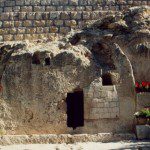Between Revelation 6:16-17, which speak of the “wrath of the Lamb” and “the great day of their wrath,” and 11:18, which says that the wrath came against the enraged nations, there is no reference to the wrath (orge) of God.
As the seals come to a conclusion, the Lamb is on a rampage. Then wrath cools, and goes into hiding. Orge reappears after the two witnesses have been killed.
The other word for wrath (thumos) doesn’t appear until 12:12 (the great wrath of the dragon), but then it becomes a major theme, especially as the wine of God’s wrath (14:10, 19; 16:1, 19) falls on those who drink of the thumos-wine of the harlot city (14:8; 18:3).
The distribution of the term gives us a clue to the plot-line of Revelation. When the Lamb opens the fifth seal, martyrs cry out for vengeance. Immediately, in the sixth seal, the Lamb begins to take vengeance, but then He is interrupted by the sealing of the 144,000 (7:1-8). After that, wrath (and, to a large degree, the Lamb Himself) disappear. That fits the response to the martyrs in the fifth seal: They won’t be avenged until the rest of the martyrs are added. That’s why the Lamb’s vengeful rampage stops in mid-stream. Before wrath can be unleashed, there have to be more martyrs.
Wrath reappears as a theme at the precise moment when the 144,000 reappear (14:1), and when the 144,000 are harvested, their blood squeezed out and sprinkled over the earth and the city.
The plot line between chapters 6 and 14ff can be summed up this way:
1. Martyrs cry for vengeance.
2. Lamb begins to take vengeance.
3. Vengeance is interrupted while the way is prepared for more martyrs.
4. The additional martyrs are harvested.
5. God and the Lamb finished taking vengeance, satisfying the martyrs’ cry.














